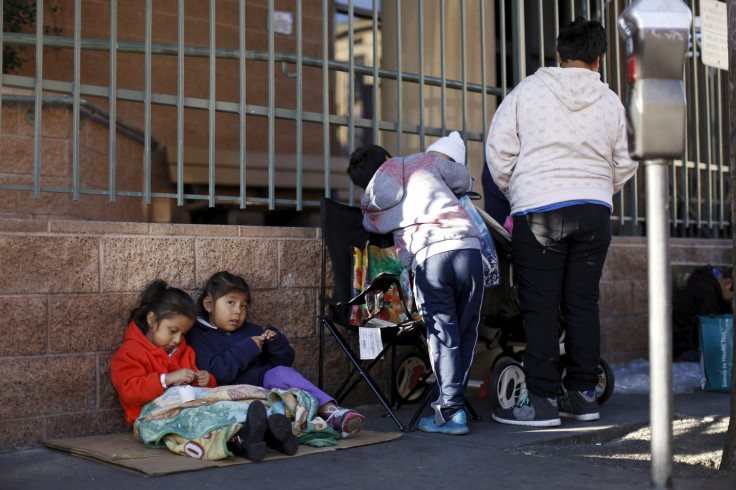Los Angeles City, County Approve Sweeping Plans To Tackle Homelessness

City and county officials in Los Angeles, which has the notorious distinction of being the “homeless capital” of America, approved sweeping plans Tuesday to help the nearly 44,000 people living on the streets.
The city’s plan, which would cost an estimated $1.87 billion over the next decade, includes expanding homeless shelters, investing in new short- and long-term housing, creating a citywide system of mobile showers and easing restrictions on overnight parking so people can sleep in their cars. The plan approved by county supervisors, meanwhile, calls for spending an additional $150 million over the next two years on measures to reduce homelessness.
“The thousands of men, women, and children who live on our streets are not disposable. It is our moral imperative to help them,” Mayor Eric Garcetti said, in a statement released Tuesday. “This blueprint puts us on the path to adding more outreach workers on our streets, putting more affordable housing in our neighborhoods, and providing more supportive services to our most vulnerable residents.”
However, it is not yet clear where the funds would come from and how quickly the new initiatives would be implemented on the ground.
It is estimated that Los Angeles County currently spends around $1 billion a year on medical, psychiatric and social welfare care for its homeless, many of whom live on the streets with no shelter at all. Driven by unemployment and rapidly rising home prices, the county’s homeless population shot up 12 percent between 2013 and 2015. Last year’s count put the number at an estimated 44,000 people, and officials predict that this year’s numbers will be even higher.
While advocates of the new plans hailed their adoption as a “historic moment,” others remained skeptical. City Councilman Jose Huizar, who co-chairs the Homelessness and Poverty Committee, acknowledged that a series of past plans to reduce homelessness had failed, and several advocates for the homeless criticized the new plan for failing to address the issue of police harassment faced by people sleeping on the streets.
“Homelessness is at a crisis level in Los Angeles,” Peter Lynn, the executive director of the Los Angeles Homeless Services Authority, reportedly said. “It’s going to take time and serious resource investment to fix it, but the plans lay out a road map to get us there.”
© Copyright IBTimes 2024. All rights reserved.












